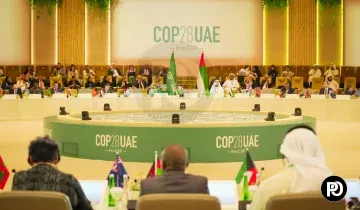Cop 28 and its Outcomes' Reshaping Climate Discourse!
Cop 28 was held from 30 November to 13 December 2024 in UAE, United Arab Emirates. In history, that was the very first Cop to realize that the root cause of climate change is fossil fuels. Around 100 countries agreed to augment renewable energy by 2030
 |
| Cop 28 and its Outcomes |
Background of Cop.
What is Cop?
First, an international treaty on climate change known as the United Nations Framework Convention on Climate Change (UNFCC) was signed by 154
countries in 1992 at the UN Conference on Environment and Development (UNCED)
known as the Earth Summit in Rio De Janeiro. These parties convened annually at a
summit formally known as the Conference of Parties (COP).
What does the cop do or what are the activities of the cop?
In the cop, they assess the effects of measures taken and the
progress made towards achieving the objectives of the convention. The first Cop
meeting was held in Berlin in 1995.
Cop 28 and its pillars
Cop 28 aimed to achieve climate crisis through four essential pillars which represent the theme of the conference.
1 Expending transition to renewable energy sources and
reducing greenhouse gas emission
2 Rectifying climate finance and securing 100 billion
dollars pledged by developed countries in the Paris Climate Change Accord of
2015. This funding is intended to support adaptation and mitigation efforts in
developing countries.
3 Privatize the lives and livelihood of the most vulnerable
population
4 To ensure the participation of marginalized communities
indigenous people, women and youth in the decision-making process
Controversy over Cop 28
The host country UAE is one of the largest producers of oil
and gas which are significant contributors to GHG emissions. By 2030, the UAE plans
to augment its capacity. So, this is a question on the steps of Cop that even a
host country is going to soar its GHG emission.
Key outcomes of Cop 28
1 fossil fuel ending
For the very first
time, most of the country realized to end or at least reduce fossil fuels.
Countries also agreed on a statement to “transition away from fossil fuels in the energy system.” In theory, the agreement seems the end of the fossil fuels era but a
plethora of barriers exist in its way to making it practical for countries and international
companies
2 Damage and loss
Those developing countries that have suffered a lot due to
climate change disasters will be financed. Around 700 million dollars have been
pledged. It is a drop in the ocean because the actual amount needed is around
400 billion dollars. The working mechanism is yet not clear; the main question
is whether transparency will be maintained or not.
3 Renewable energy transition
To triple renewable energy capacity and the double the global rate
of energy efficiency by 2030, a pledged has been signed by 118 countries. This
is a positive step. The term transitional fuel makes liquefied petroleum gas, a
climate-damaging gas, acceptable. In case of developing countries, it is the
main source of fuel after burning wood and other biomass
4 Oil and gas decarburization charter
A decarbonization charter was signed by around 50 national and international oil companies. The gloomiest image is this charter does not cover 60 percent of the World's oil and gas production.







0 Comments